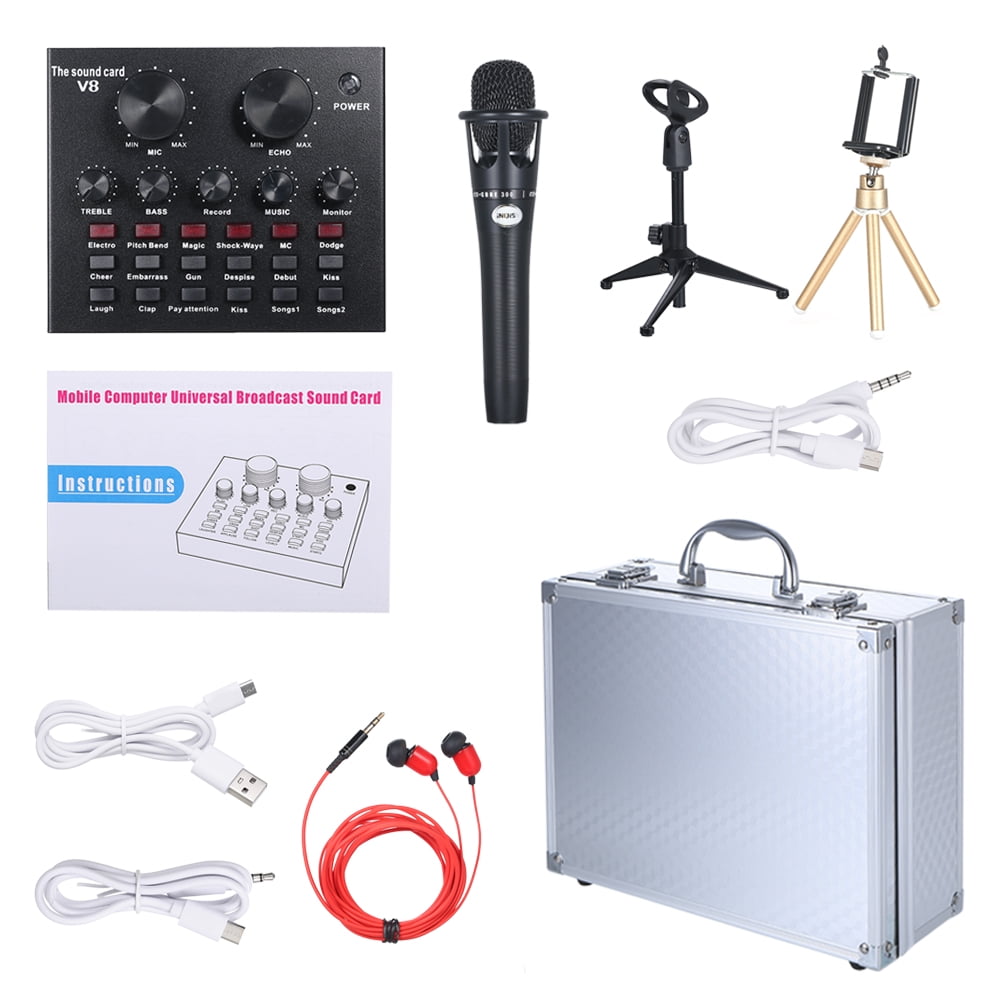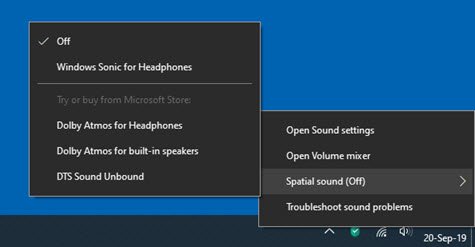Oct 11, 2018 Sound & Volume Mixer and Control in Windows 10. In Windows 10, if you click on the speaker icon, the volume control slider opens. You have to right-click on the speaker icon to see the following. Sep 30, 2020 Volume Mixer won’t open if there are corrupted or missing Windows system files. Under this situation, the System File Check is a practical tool to repair the corrupt system files. If you don’t know how to run an SFC scan, you can refer to this post in which detailed steps are provided. Volume Mixer replaced Windows 7’s volume control feature when Windows 10 was introduced. On Windows 7 and other older versions of Windows, all you needed to do was click the speaker icon in the Taskbar and you will be able to access the master volume.
What is the shortcut to open Volume Mixer?
Change volume by hotkeys with your preferred adjustment step Limiting the volume of the launched application if its volume is at 100% to your preferred value In-app volume mixer which can be opened by global hotkey or by clicking on the tray icon. May 10, 2016 This extension is a simple volume mixer that allows the user to change the volume of individual tabs as well as the master volume of all tabs from a simple popup UI in the right hand corner of the screen.
If you have created the desktop shortcut for the volume mixer, you can assign a keyboard shortcut for the Windows volume mixer! Simply right-click on the speaker icon, then goto to the Properties option and define the shortcut key. (Image-3) Windows-10 Volume Mixer Desktop Shortcut-Key!
Why can’t I open my volume mixer?
Press Ctrl + Shift + Esc to open the Task Manager. In the Processes tab, locate the Windows Explorer process. Once the process has been successfully restarted, try interacting with the Speaker icon and trying to open the Volume Mixer to determine whether or not the fix actually worked.
How do I open Windows audio mixer?


You can access the Volume Mixer by following these instructions:
- Go to the bottom-right corner of your taskbar, then right-click the Volume Control icon.
- Select Open Volume Mixer from the options.
- A new window will pop up. Here, you will see the running applications and their audio levels.
How do I get the volume mixer on my taskbar?
The Taskbar and Start Menu Properties window will show up on your screen. Here, go to the tab called Notification Area. In the System icons section check the Volume box and click on OK. The Volume Mixer icon will now show up in the notification area of your taskbar.
How do I create a shortcut key for volume?
However, to use them, you have to press and hold the Fn key on the keyboard and then the key for the action that you want to be performed. On the laptop keyboard below, to turn the volume up, you have to press the Fn + F8 keys simultaneously. To lower the volume, you have to press the Fn + F7 keys simultaneously.
How can I increase volume without Fn key?
Try press and hold FN key then ESC to enable toggle FN Lock. If that doesn’t work, check if you have Windows Mobility Center installed then set FN key row as Multimedia key instead of Standard keys.
How do I activate the volume icon?
First, make sure the volume icon behavior is set to Show icon and notifications. Then, towards the bottom of the screen, go ahead and click on Turn system icons on or off. Make sure the volume icon is set to On. That’s it!
How do I stop my volume mixer from auto adjusting?
Here’s how to do this:
- Press Windows key + R to open up a Run dialog box.
- In the Sound menu, select the speakers that are getting automatically adjusted and choose Properties.
- Then, go to the Dolby tab and click the Power button (near Dolby Digital Plus) to disable it.
How do I open volume control?
To open the Volume Mixer, just right-click the speaker icon on your system tray and select “Open Volume Mixer.” When you first open it, Volume Mixer will likely just show two volume sliders: Device (which controls the master volume) and System Sounds.
Why did my volume control disappear?
If your volume icon is missing from the taskbar, your first step should be to ensure that it is enabled in Windows. A new panel will display where you can toggle on/off the various system icons. Make sure the Volume control toggle is set to ON. Restart Windows and see if the sound icon is back in the taskbar.
How do I get volume mixer?
The first way is to right-click on the volume icon in the System Tray and select “Open Volume mixer” from the menu.
- Right-click on the volume icon in the System Tray and select “Open Volume mixer” from the menu.
- Press the Windows key, type “Sound mixer options” then hit enter.
How do I adjust the volume?
Under “Media volume,” tap Play media to.
To change the volume of other sounds, like your ringtone:
- Press a volume button.
- At the right, tap Settings: or. If you don’t see Settings, go to the steps for older Android versions.
- Slide the volume levels to where you want them: Media volume: Music, videos, games, other media.
How do I pin the volume to my taskbar in Windows 10?
Volume Mixer Not Responding
From the WinX Menu, open Settings > Personalization > Taskbar. Here click on the Turn system icon on or off link. The Turn System Icons On or Off panel will open, where you can set icons you want to display on the Notification area. Just toggle the slider for Volume to the On position and Exit.
How do I get my volume mixer back Windows 10?
Get the old Windows volume mixer back in Windows 10
- Go to Start > All apps > Windows System > Run.
- Inside the Registry Editor, navigate to HKEY_LOCAL_MACHINE > SOFTWARE > Microsoft > Windows NT > CurrentVersion > MTCUVC.
- Right-click MTCUVC and choose New > DWORD (32-bit) Value.
- Log out of your Windows account and log back in.
Volume Mixer Mac
How do I get the sound icon on my taskbar Windows 7?
Step 1: Turn on the system sound icon (Windows 7)
Volume Mixer
- Go to control panel from your start menu.
- Type ‘Volume icon‘ in the search box.
- From the results that appear, click on “Show or hide volume (speaker) icon on the taskbar” under the Notification Area Icons title.
Volume Mixer Chrome
It is simple to create a Volume Mixer Desktop Shortcut inWindows 10/11, the example is also for Windows 8.1 suitable!Content: Examples / Solutions: 1.) ... Volume mixer desktop shortcut on Windows 10/11! |
| (Image-1) Volume Mixer Desktop Shortcut for Windows! |
Many sound cards or sound processors come with software that you can use to configure and test sound card settings. Check the information that came with your sound card or computer.
Most speakers have a volume control, but you can also control the overall level of sound on your PC.
Laptops don't usually have sound cards. Instead, they have integrated sound processors. However, many of the questions and answers in this topic apply to laptops.
| (Image-2) Open Sound Volume Mixer in Window 10! |
This solution to create Volume Mixer Desktop Shortcut is suitable for: Windows 11, 10 Pro, Enterprise, Home, Windows 8.1, Windows 8, Windows-Server 2019, 2016, 2012, Windows 7 Basic, Professional, Starter, Ultimate
2.) Define keyboard shortcuts for the volume mixer under Windows 10 or 11!
| (Image-3) Windows-10 Volume Mixer Desktop Shortcut-Key! |
3.) Pin the volume mixer to the taskbar, or Windows 10/11 Start!
Just right-click on the desktop shortcut and pin it to Start and / or optional on the windows taskbar.
| (Image-4) Windows-10 Volume Mixer Pin to Start or Taskbar! |
4.) What can I do if the volume mixer is not working properly?
See also: ► Customize Auto-Play settings in Windows 11/10, (enable disable)!
FAQ 174: Updated on: 5 July 2021 16:28